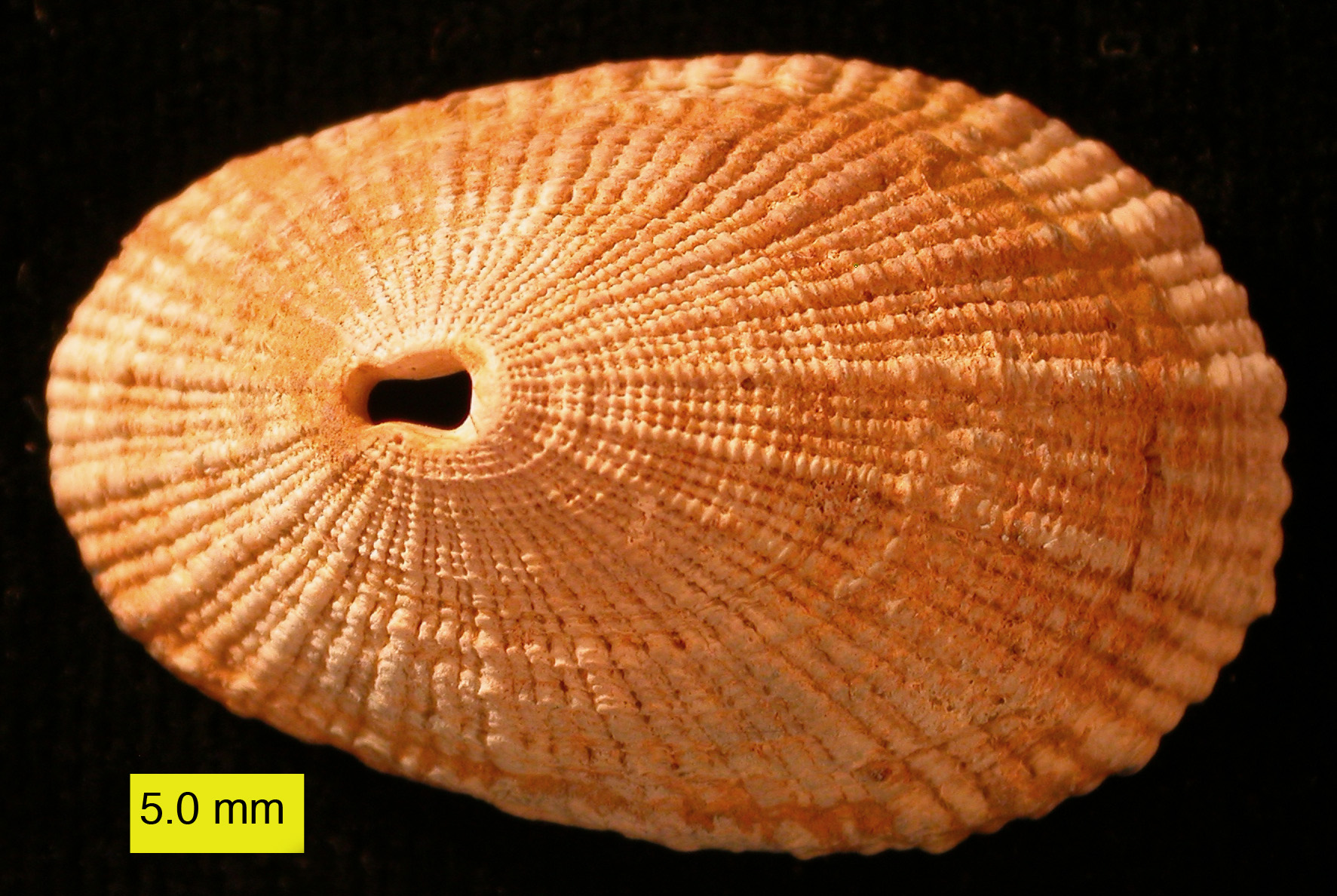Keyhole Limpet on:
[Wikipedia]
[Google]
[Amazon]
Fissurellidae, common name the keyhole limpets and slit limpets, is a taxonomic
 Keyhole limpets somewhat resemble true limpets because of the simple conical shape of their shells, but in reality they are not closely related to true limpets, which are in the clade
Keyhole limpets somewhat resemble true limpets because of the simple conical shape of their shells, but in reality they are not closely related to true limpets, which are in the clade
family
Family (from la, familia) is a group of people related either by consanguinity (by recognized birth) or affinity (by marriage or other relationship). The purpose of the family is to maintain the well-being of its members and of society. Idea ...
of limpet-like sea snails, marine gastropod molluscs in the clade Vetigastropoda
Vetigastropoda is a major taxonomic group of sea snails, marine gastropod mollusks that form a very ancient lineage. Taxonomically the Vetigastropoda are sometimes treated as an order, although they are treated as an unranked clade in Bouchet ...
.Rosenberg, G. (2012). Fissurellidae. Accessed through: World Register of Marine Species at http://www.marinespecies.org/aphia.php?p=taxdetails&id=111 on 2013-01-02
Their common name derives from the small hole in the apex of their cone-like shells. Although superficially resembling "true" limpets, they are in fact not closely related to them.
Distribution
The distribution of fissurellids is worldwide, from cold waters to tropical waters. Powell A. W. B., ''New Zealand Mollusca'', William Collins Publishers Ltd, Auckland, New Zealand 1979Habitat
Fissurellids live in habitats on and under rocks in the lower intertidal zones to deeper waters.Shell description
 Keyhole limpets somewhat resemble true limpets because of the simple conical shape of their shells, but in reality they are not closely related to true limpets, which are in the clade
Keyhole limpets somewhat resemble true limpets because of the simple conical shape of their shells, but in reality they are not closely related to true limpets, which are in the clade Patellogastropoda
The Patellogastropoda, common name true limpets and historically called the Docoglossa, are members of a major phylogenetic group of marine gastropods, treated by experts either as a clade or as a taxonomic order.
The clade Patellogastropoda is d ...
. This conical shape of the shell allows keyhole limpets to withstand wave attack on exposed rocks. The shell has a reticulate (= net-like) sculpture with strong radial ribs and lacks an operculum. The shell ranges from 3 mm to 13.2 cm. The great keyhole limpet ''( Megathura crenulata'') measures up to 13.2 cm.
For respiration, the shells of fissurellids have a single apical
Apical means "pertaining to an apex". It may refer to:
*Apical ancestor, refers to the last common ancestor of an entire group, such as a species (biology) or a clan (anthropology)
*Apical (anatomy), an anatomical term of location for features loc ...
or subapical perforation ("keyhole"). This opening at the top allows a direct exit of exhalant water currents together with waste products from the mantle cavity. The water enters under the edge of the shell near the head and passes over large paired gills. Most young species in this family have a marginal slit in the middle of the anterior end of the spiral shell. Some species possess just a short internal groove at the anterior end. The paired organs in the mantle cavity represent a primitive condition in gastropods.
The soft body consists of a well-developed head, a short muzzle. It has a broad and flat foot and a well-developed mantle. This foot exerts a strong suction, adhering the keyhole limpet to its hard substratum. The mantle extends in some species partly or completely (as in ''Megathura crenulata'') over the shell. The tentacles at the ''epipodium'' (the lateral grooves between foot and mantle) are well developed. The species in ''Medusafissurella
''Medusafissurella'' is a genus of minute deepwater keyhole limpets, marine gastropod mollusks or micromollusks in the family Fissurellidae, the keyhole limpets and slit limpets.Bouchet, P.; Gofas, S. (2012). Medusafissurella McLean & Kilburn ...
'' have numerous subequal
{{Short pages monitor